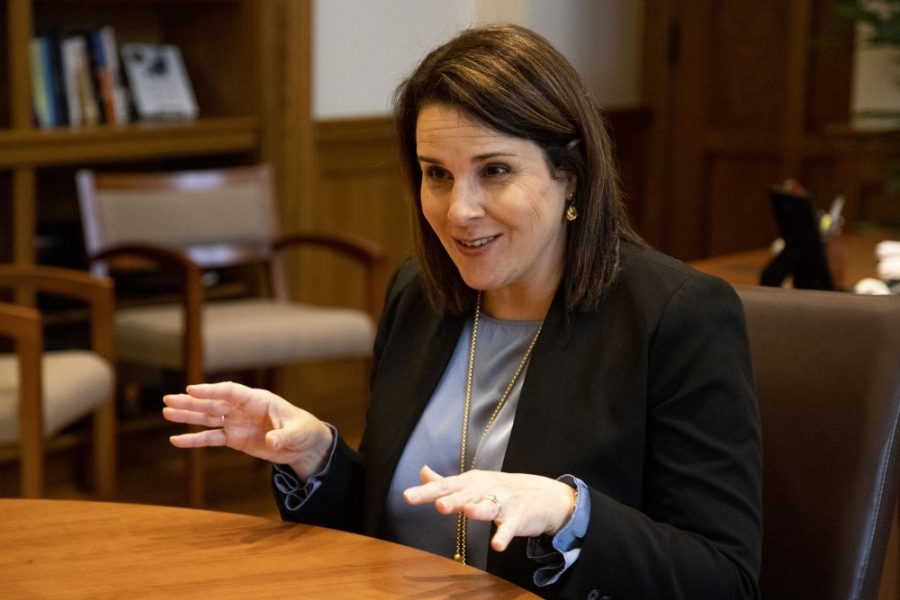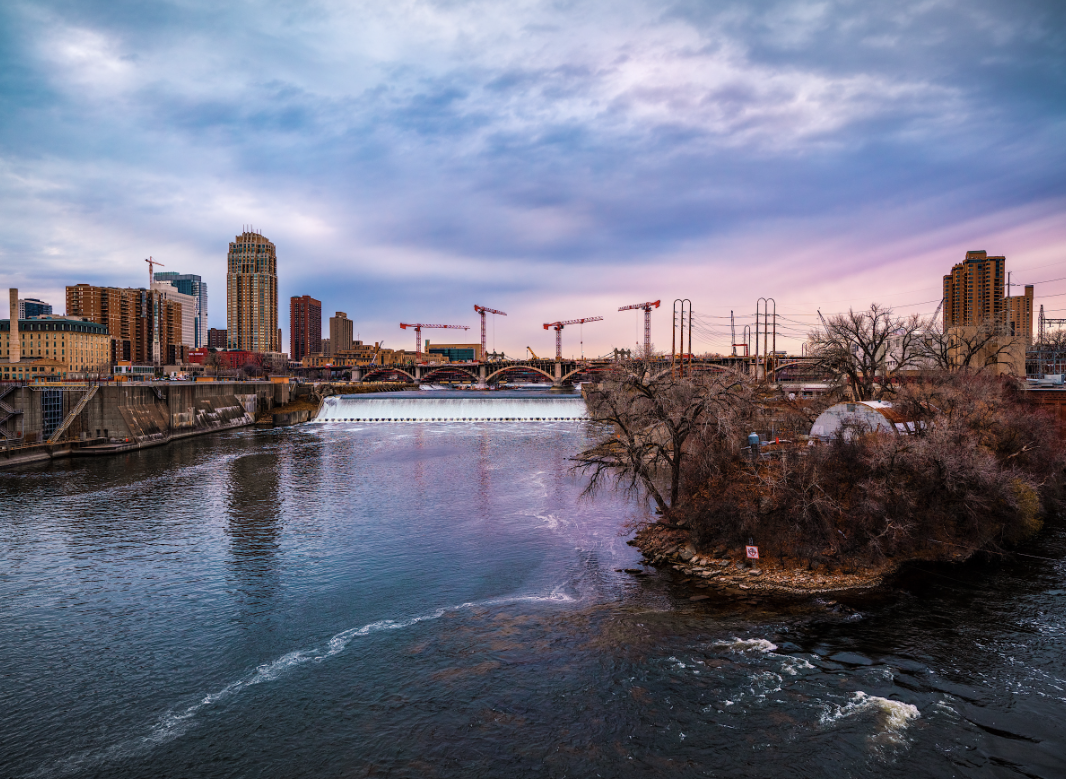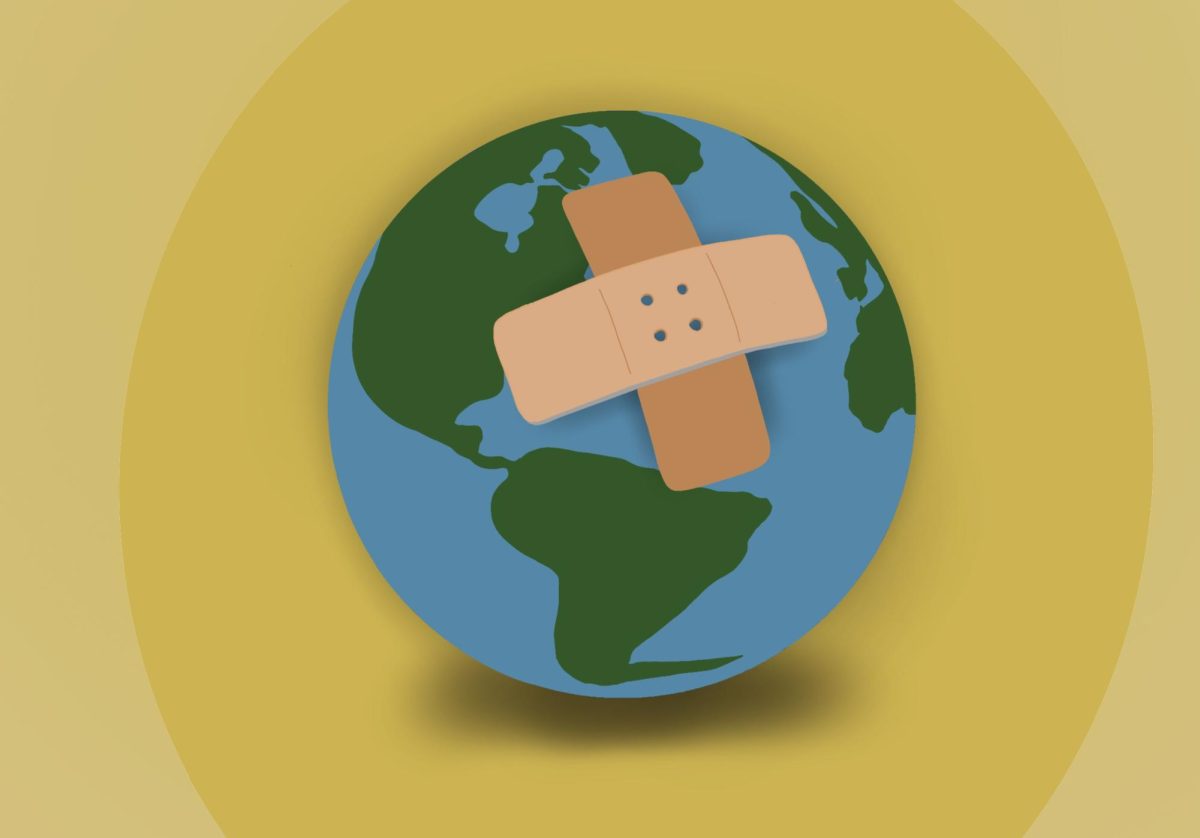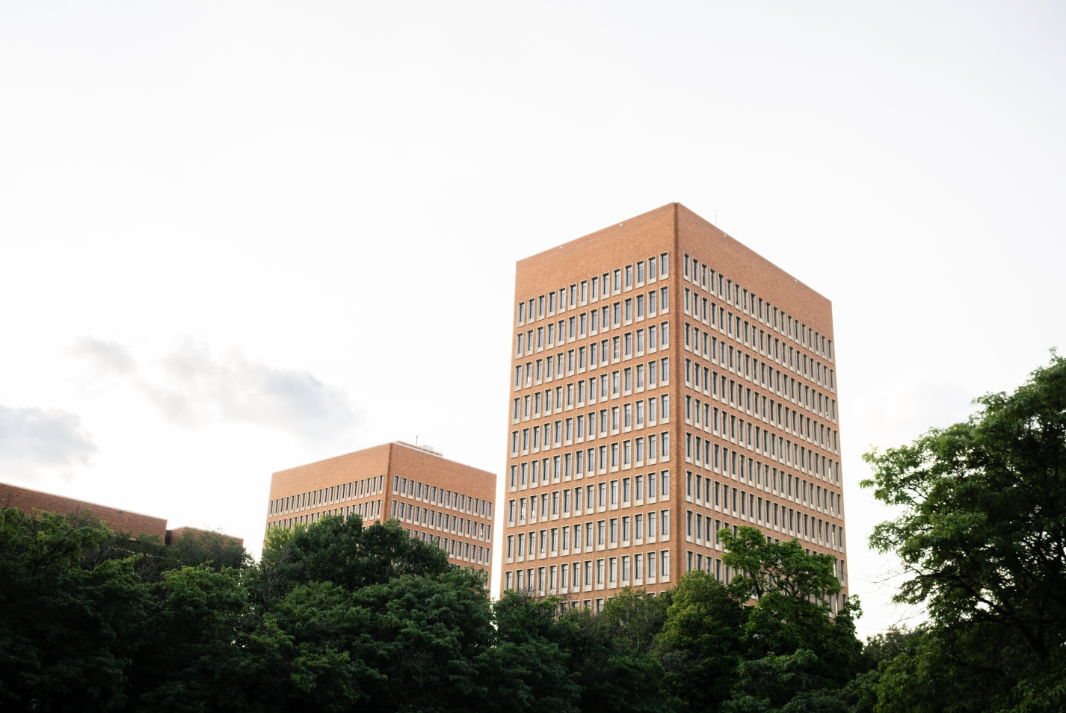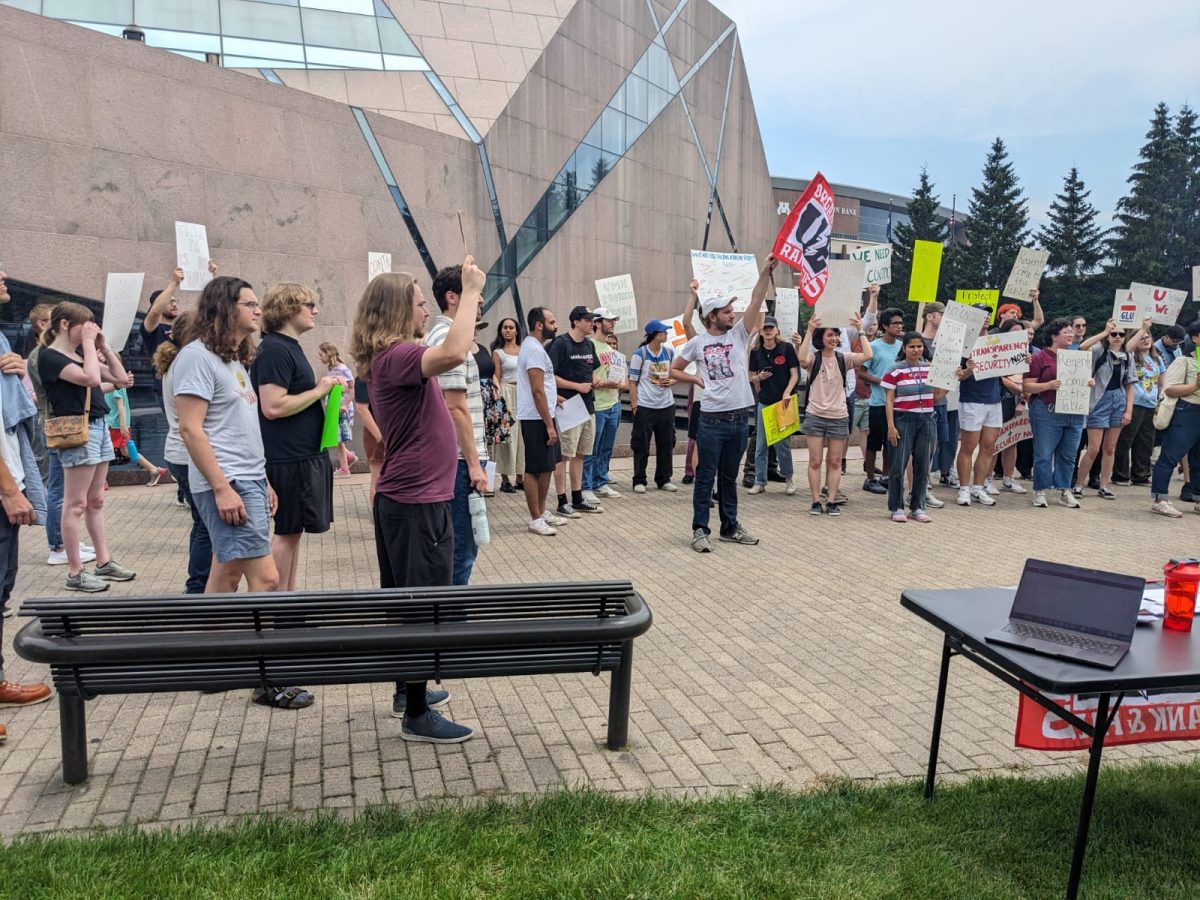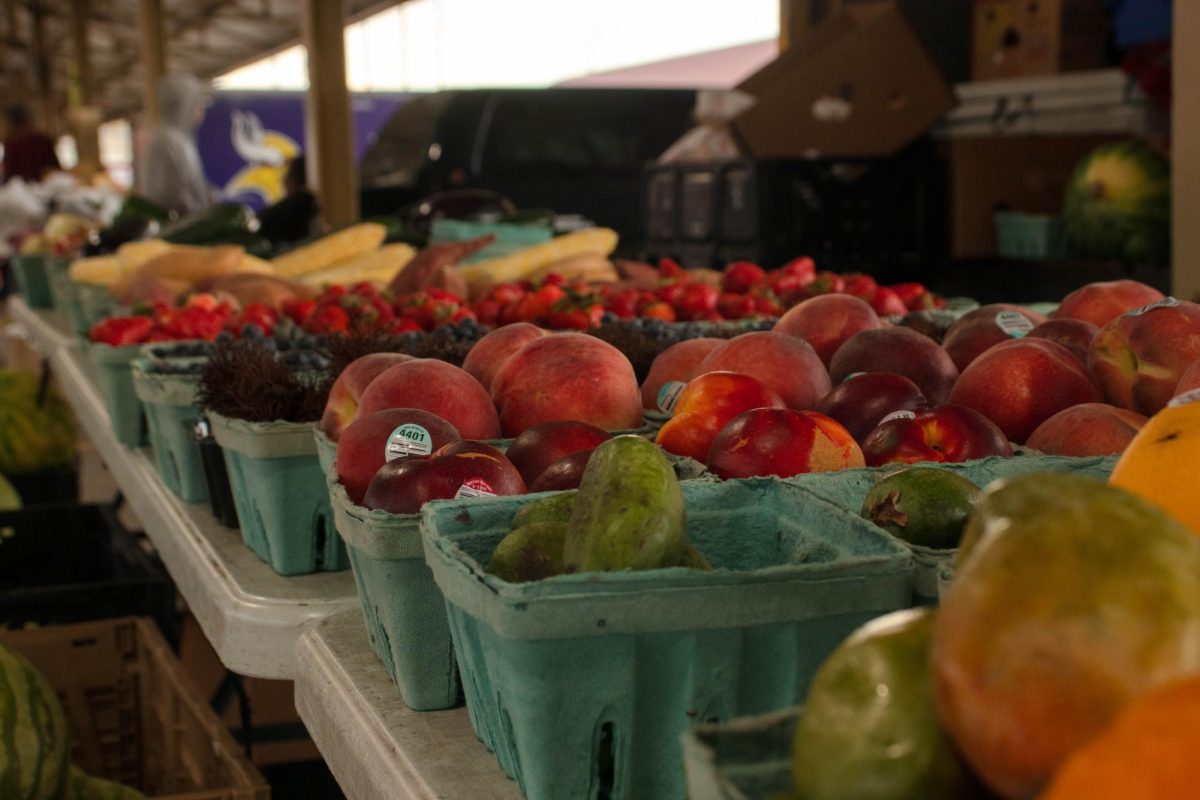In an interview with the Minnesota Daily on Thursday, University of Minnesota President Joan Gabel talked about the recent decision made by the Board of Regents to increase tuition and the decision to remove masks on campus.
Gabel also addressed the recent death of two University students in the past month and gave updates on the Fight for $15 and CPAC referendums.
The Board of Regents announced it can be expected that tuition for Twin Cities students will increase by 3.5% for the next academic year. Why was this decision made and what the process was like?
“The decision to increase tuition, I want to be very clear, is always a last resort. Two years ago, we had no tuition increase at all. Over the last few years, we have had well below inflation tuition increases. There had been large tuition increases in years past, actually in decades past, but in the last few years, tuition has been at 0, 1 or 2%, this year being a little bit higher.
It’s because our expenses go up. We only have so many sources of revenue as an institution. Tuition is the last thing for us to increase, but as we all know we’re in an extremely acute inflationary environment. Our expenses go up just like everyone else’s. We are trying to address a variety of increases in costs, and so we have increased tuition at the lowest amount we possibly could given that inflation at the moment is over 8%.”
How are you going to lower students’ concerns about the tuition increase?
“We really look at this more holistically because we look at lower cost of attendance. We then look at how we provide financial support where it’s needed most and financial education to students so that they understand the full slate of options that they have in order to manage the cost of attendance. We’re also looking at things like how much students make when they work on campus …We are also working for the State, seeking state funding through forms of grants, scholarships or other incentives. As a result of that, even though tuition has gone up, debt is actually flat and in some groups going down.
Behind the scenes, one of our biggest areas of focus is on making sure once you become a student, that you will graduate timely, you will be well and you will be ready for the next chapter of your life. Whether you take on debt or not, tuition is expensive for everyone. You want it to be worth it, so that means you stay well, get the education that you need and you’re prepared for the next chapter of your life.”
Students have reported being upset with the tuition increase and that they feel they no longer have an “affordable education.” What are your thoughts on this? Do you think the University offers an affordable education?
“I absolutely think the University offers an affordable education. The cost of this tuition increase is a few hundred dollars a year. That’s not to say it is not a serious financial commitment to invest in higher education, that is true. Our students’ net cost is very competitive with our peers, our graduation rates are better than most of our peers and the debt load that most of our students take on is lower than our peers.
What we do in order to support that education, in addition to having some of the best faculty in the world, is a very high commitment around mental health, student affairs and career planning/placement. The people who do that work are highly trained professionals and we want to attract the best people … We believe we are striking that balance in an affordable way on behalf of our students.”
There have been two student deaths near campus in the past month. Authorities found Austin Retterath in the Mississippi River on May 18 after he’d been missing for 10 days, and they found Abdi Ali in the river on June 6 after he’d been missing for five days. What is your response to these two student deaths, and is the University doing anything to address them?
“Without speaking specifically to either student and out of respect for their privacy, to speak more generally that we have a mental health crisis amongst 18-24 year olds is indisputable…I consider it to be a crisis, and I am certainly not alone in that assessment.
First and foremost is we have sufficient and the right type of resources for students who may be in need of support right now. Whether that’s licensed clinicians, peer mentors and the U @ UMN app for those who prefer to engage in that way, so that students who need to reach out can and will be able to be tended to quickly and easily in crisis.
We’re also working really hard on the communication around this so that it’s well-known. Students are hearing about it during orientation, if you’re a student here you would know what to do in that situation.
In honor of all of the students that are suffering, to those who have experienced the most profound suffering and had the most tragic results, we want to try to do more than just have an immediate response but to understand what is happening underneath.”
An email message sent to students on May 11 announced that starting May 12 masks are no longer required in classrooms. The University’s COVID-19 dashboard shows a peak in positive cases from the end of April to the beginning of May. Why was the decision made to remove masks in classrooms?
“Through the entire pandemic, we have had a shared governance committee called the Emergency Manage Policy Committee that has been both a way to listen to different voices but also to have subject matter experts in the same Zoom room together We also wanted to make sure we were inclusive, so that didn’t mean everybody liked every decision, but every voice was heard as we tried to navigate through and keep safety as the top priority.
Over the course of the pandemic, we have had the mask mandate come and go a couple of times. Based on the data that is available, the policies are set … with the Minnesota Department of Health, the CDC, the epidemiologist that works with the University and our chief medical officer. When we reinstated masks a year and a half ago, we had a barrage of negative feedback on that, but that is what the data and advice suggested at that time.
If the transmission rates go up, we would reinstate the mask mandate and when they came down again, we would lift it. We have no expectation that this is totally over; we hope it’s over soon. In the meantime, we just follow the data, the standards set by state and federal levels and our experts.”
Are there any updates on the Fight for $15 and CPAC referendums that passed in the elections this past semester?
“As we have said, we do not disagree with the Fight for $15. We believe that it’s time for students who work on campus to have a raise.
Like any other employers, we look at what the market is doing, what our competition is and what a fair and dignified treatment is to everyone who works for us. This would be true to students who seek the $15/hour, for grad students, it’s across the board …The fact that the market has increased in pay and that students earn more off campus doesn’t suddenly make new money on campus to fill the gap.
There are also HR considerations because actually, most of our student workers make $15/hour or more, so if we bring the floor up, what does that do for the rest of the scale and how do we do that on a fair scale? It’s an analysis that takes some time and I know that’s frustrating, but we try to make these decisions in an evidence-based way. We’re working on that process and expect it to end well, I just don’t want to get ahead of the process.
With regards to CPAC, the process we have for oversight to public safety now includes the campus safety committee, which is a Senate committee with student senators. The idea of our community having a very strong transparent advisory role in how we address policing and all of the other attributes of safety is something that we have always agreed to. Whether we would have control of policing is not something we agreed to.
We hear the students who voted for this and we know they would like more, but we have moved the needle quite a bit with the appreciation for our Senate for introducing the campus safety committee. We have brought in outside review; we have discussed this very publicly at Board of Regents meetings. We know that’s not what the students voted for, but we want students to understand why we’re doing most of what they asked for.”
This interview has been edited for clarity and length.










